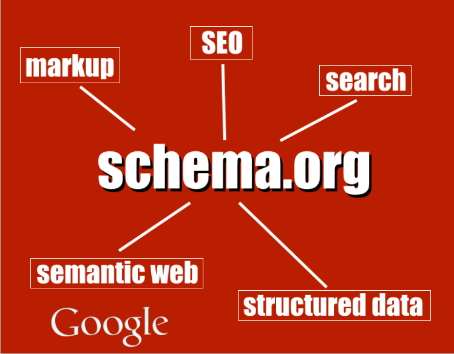I am fortunate enough to have seen the Internet revolution from the beginning. My first job was as an Associate Account Executive at an agency that specialized in Yellow Pages advertising. (Yes, those Yellow Pages that have since gone extinct.) When talking about my career, people often ask how I migrated from Yellow Pages to online. I moved to a smaller agency where I oversaw business development and reported directly to the owner and my boss, Jerry Ferris. Jerry walked back to my cube one day and told me that we just lost an account to another agency that was now selling online yellow pages. He told me to “go research and figure this Internet thing out.”
One month later, I was on the road with June Ferris, Jerry’s wife. We presented a traditional Yellow Pages plan along with an online plan to a major insurance company. We didn’t win the business. The feedback? We spent too much time on the “online” portion and insurance customers would always go to the yellow book first. I wonder how long that strategy was in place?

In those 20+ years, I have seen the change from hand-coded HTML pages to responsive and AMP designs. SEO started when webmasters added certain keywords to the web page and changed the name from non-descript “Home,” “Services,” “Products,” “About,” etc. to contain specifically targeted words. Then, SEO migrated to the black-hat era of link buying, keyword stuffing, cloaking (to show content to search engines but not page visitors), and many more underhanded practices. Now, SEO is no longer a single person’s job. It involves many teams (PR, Product Marketing, Demand Gen, etc.), all of which are required to produce helpful content and a decent user experience.
Content is the Backbone of Your SEO Efforts
Below are some key items you should acknowledge and understand if you want to rank in 2017 and beyond.
RankBrain
RankBrain came out with enormous hype as people debated about this new artificial intelligence that Google was using in their ranking algorithm. It was officially confirmed by Google in March 2016 as the third most important signal of the algorithm.
- What is RankBrain and what should I do about it? RankBrain assists the Hummingbird algorithm to help Google sort through the massive number of indexed pages of Internet content. By using relevance matching combined with other ranking algorithms such as Panda, Penguin, Pigeon, etc., Google provides better results related to the underlying meaning (or context) of the search.
Content is the Core to Your SEO Efforts
Google and the other search engines have done a great job of defining what “good” content is and have rewarded those who follow white hat practices while creating content. Since the Panda update of 2011 it has been hard to get away with any of the many, at one time, successful tactics to get ranked. Gone are the days of keyword stuffing, spammy content, META manipulation and more.
- What should I do? Create a content calendar and stick to it. SEO is not FREE! Dedicate a portion of your budget to real content creation. This content and its eventual dissemination can provide the same value as a paid media plan. Track the conversions, attach ROI and make content the backbone of your SEO efforts.
Social Supports SEO
It is common knowledge that social networks do not pass link equity as many of these platforms are not publicly accessible, nor are they crawled—but that does not mean social is independent of SEO. After you have created your content, it’s time to share that content on your “owned media” channels.
- How does social support SEO? The SEO interplay comes from the delivery of website content on social networks, which produces shares and UGC (user generated content). These social shares (aka “mentions”) could signal to search engines your company is the authoritative source – allowing the rest of your web content to rank higher. Ensure that your content is well thought out, interactive, intriguing and worth sharing.
It’s Link Earning – Not Link Building
Penguin, another cute and cuddly animal, put to death the agonizing reality of what link building had become for SEO. The days of buying links, link schemes, wheels, farms, etc. are over. The only links that count now are naturally occurring, earned, highly authoritative endorsements.
- How can I effectively earn links? Quality over quantity. Reach out to influencers, conduct educational interviews, create helpful guides or infographics worth sharing. If you have store locations, local link building is one of the most powerful, authoritative ways to build links. In addition, we expect quality, equity-passing links happening as an ancillary benefit of creating share-worthy content.
Location, Location, Location
Due to localization, personalization, history, device type, time of day and many other signals, you may see different search results for the same exact search query. The importance of local is amplified by Google running a separate algorithm specific to local search (affectionally known as Pigeon). The more locations you manage, the more complicated and time-consuming local optimization can be.
- How can I succeed at Local SEO? The key to local success is four-pronged:
- Trusted location information
- A locally optimized site
- Authoritative links
- A good review profile
To help manage local listings we recommend using a SaaS platform along with Google My Business and Bing Places. Google and Bing cover their own engines, but a SaaS platform such as Moz Local or Yext can help you manage NAP (name, address, place), citation distribution, data accuracy, local links, images, and reviews, all while tracking ranking position and metrics that are key to local optimization.
Voice Search
Voice search has been the fastest growing type of search this year. In fact, COM SCORE research estimates that soon 50% of all searches will be voice based. With digital assistants, such as Amazon’s Alexa, Siri, Cortana, and GNow all rising in popularity, the voice search trend is expected to continue and accelerate. This is particularly true with millennials who use their thumbs and voice to obtain information through a mobile device. The need to optimize for voice searches will become imperative in 2017.
- How can I rank for conversational search queries in voice search? Since voice searches are often long-tail, conversational questions, you will need to create content that answers those types of queries. Many websites already have a Frequently Asked Questions (FAQs) section. Make sure each of these answers lives on its own URL (instead of housing all answers on a single page) so that you create many different pathways (aka web pages) for people to enter your website. From a technical perspective, add Schema markup to your pages to remove ambiguity related to what your content means.
Search Engine Results Page (SERP) Changes
As discussed above, many SEOs long for the days of the “10 blue organic links.” That is long gone with the advent of Knowledge Graph, Shopping, Answers, Cards, Local, Paid and Position Zero. Google seems to place these prominently above the organic blue links. Optimizing your content towards the results pages is one of the most overlooked parts of an SEO strategy. It is imperative to build content and pages that fit into the SERP layout most common for YOUR industry.
Position Zero
Google’s goal is twofold: 1) to provide answers as quickly as possible, and 1) to keep you on their site to conduct additional searches so they can collect data on your behavior. By simply posting the best organic blue link, Google would lose that revenue and data. Hello, “Position Zero.” The SERPs have been tested and reconstructed to drive down organic results and insert various types of answer boxes toward the top in response to the queries.
- How can I rank in position zero? Content appearing within the first ten organic results has a high likelihood of appearing in position zero. Avoid placing ads within the first 400 words of your content on your webpage.
Rich Answers
When users ask a question in the query box, Google has begun delivering a separate box of results in “Position Zero.” These boxes are mainly paragraph answers, but they can also be a list or table with a site reference link. Since these snippets are at the top of the page, they generate great click through rates.
- How can I obtain rich answers? To obtain these snippets, you need to create authoritative content, target the keywords and questions asked, add answers to your site and use schema to highlight page content.
Technically Speaking
“Technical SEO is dead!” I have seen this written about plenty of times. It is partially true; in the past, unscrupulous SEOs manipulated code to dupe the search engines into indexing shallow content. The search engines have since caught on, and the success of that practice is indeed dead. But when it comes to preparing your pages to address the new types of search requirements and queries, Technical SEO is now more important than ever.
Code Base
We recommend selecting a site code base that is mobile optimized (not just friendly), allows Schema, loads fast, and provides an easy to follow experience for not only bots, but for your visitors.
Muted Metadata
Keyword placement is important to nail down within the page title tag and H1 tag within the page, but we recommend doing so more for the searcher who has to decide which search result is most helpful. With the addition of RankBrain to the Google algorithm, the context of the query may prove to be more important than the metadata entered by a webmaster.
- Should I invest in optimizing my metadata? Yes! Optimizing metadata is still recommended so your website is positioned accurately, but the significance of metadata is akin to a book. The title on the spine, table of contents and chapter titles are important, but the book’s story is what you remember.
Schema
Schema markup is additional code placed on your web page to help search engines understand what your page content is about. The markup calls out specific aspects of your product and services. This allows search engines to understand the differences in the query “Paris Hilton” from someone looking to book a hotel in Paris versus to find information on the person. There are hundreds of schema variations, but it is most often used to highlight products, people, a place, event, creative assets, or organization.
- How can I add schema markup to my website? Schema is often built into SEO friendly platforms or can be added by a plugin or custom coding. Start with basic schema that is specific to content on your site and build that out based on your results and goals.

Mobile
In October 2016, Google announced it will be creating a mobile-first index of the web. This means they are favoring the mobile version of websites over the desktop version. Per recent Google research, over 50% of global traffic and 58% of US traffic come from mobile devices. If your site is not mobile friendly, you will be relegated to the desktop search results. Google also indicated it will update and improve the algorithm of the mobile site index more often than the desktop one.
- How can I assess my site’s mobile-friendliness? Run your site through the “Mobile-Friendly Test” to see where you stand. Test results will provide you with areas of optimization and instruct you on how to improve your mobile site page speed, content layout, optimize Meta tags, implement structured data, image size, etc. Further mobile improvement can be found through…
Accelerated Mobile Pages (AMP) Project is Moving In…
Google is pushing mobile development hard. The result has been a lot of “mobile friendly” sites and pages that are slow and not optimized. Responsive web design has eliminated the need for “M-Sites,” but it has also led to bloated, slow sites that only size down, while simply producing a hamburger menu. AMP is the creation of separate pages that do not work from the core CSS and code. These pages are built as separate entities and require very specific AMP-based coding.
- What should I do to get on board with AMP? AMP is here to stay. Start creating and testing AMP pages with the goal of loading the page in under one second. AMP search results are present; mobile devices have already begun to drive traffic to the equivalent AMP page instead of a mobile page or app. If you are reliant on mobile traffic, you should heavily invest in AMP building.
Future State of SEO

Wearables and Implantable Devices
Wearables are becoming increasingly a part of our daily lives. We have seen the explosion of smart watches, glasses, virtual reality glasses and more. Even clothing and fitness items are being produced with tech pre-built in.
Marketing to these devices requires vastly different advertising and content than you would see on a desktop screen. These items may not be core to your business now, but they will be in the future. With the use of beacons, wearable and implantable devices can be activated anywhere.
Beacons
Beacons are small, inexpensive communicators that use short wave signals to communicate with an app or wearable. The ultimate in personalization, beacons will be viewed as a blessing or a curse by many. Creating personalized content will be key to reaching this market.
1-Click Ordering
Many websites allow single click ordering, which allows you to order items easily and quickly. 1-Click will take over our lives, as the click may not be an actual click, but a voice command. Multi-screen usage will encourage us to order items from a commercial as it is airing, or mention a product to Echo when you are listening to the radio or a podcast.
The Machines Are Taking Over
Our cars are becoming our communication hub, and without being able to grab our phone, voice will take over our car rides. Tech is also making its way into everyday appliances in our home. Refrigerators are being designed to become the epicenter of your home. Washers and dryers can provide feedback and recommendations based on your patterns. There are even irons that connect to the internet to give you feedback on specific materials and articles of clothing.
I ran this by my business partner Adam Proehl and he referred to this as my SEO manifesto. I like to think my efforts are akin to the famous scene from Animal House where Bluto goes on the war path:
Bluto: What? Over? Did you say “over”? Nothing is over until we decide it is! Was it over when the Germans bombed Pearl Harbor? Hell no!
Otter: [to Boon] Germans?
Boon: Forget it, he’s rolling.

I guess I am just rolling. Please provide any feedback or questions directly to me. I appreciate you taking your valuable time to read my thoughts.
Is your site optimized for search? We can help. Take a look at our SEO capabilities.

